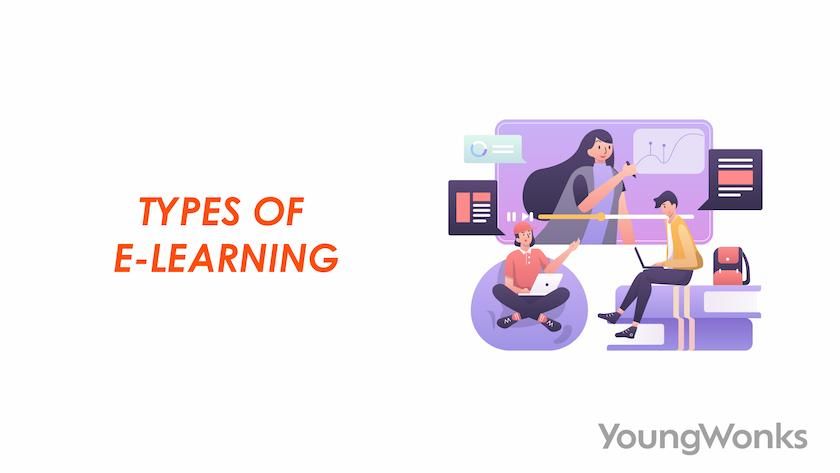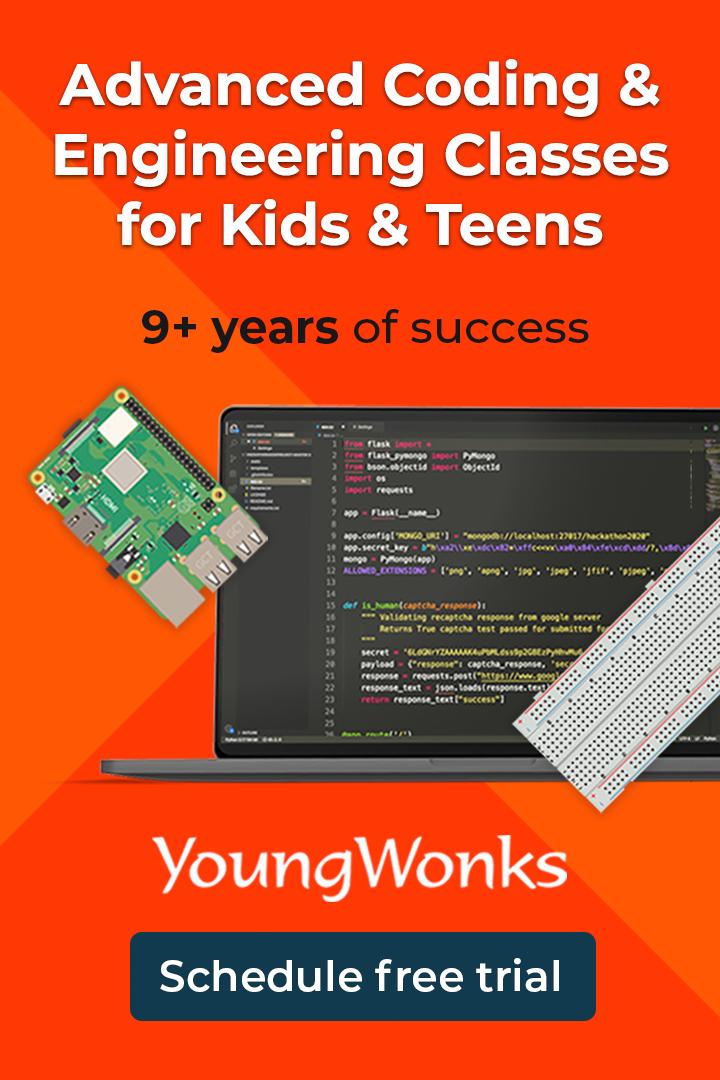Feb 13, 2025 By Team YoungWonks *
Types of E-Learning and Their Benefits
1. Synchronous E-Learning
Synchronous e-learning involves real-time interaction between instructors and learners. This type of online learning is similar to traditional classrooms but takes place in a virtual learning environment through video conferencing, live webinars, or virtual classrooms. Learners engage with course materials, participate in discussions, and receive instant feedback, making it a highly interactive and engaging learning experience.
Benefits of Synchronous E-Learning:
- Provides real-time interaction and instant feedback.
- Encourages collaborative e-learning through discussion forums and live chat.
- Enhances learning outcomes by allowing learners to ask questions and clarify doubts immediately.
- Ideal for corporate training programs and higher education institutions where structured learning is essential.
2. Asynchronous E-Learning
Unlike synchronous learning, asynchronous e-learning allows learners to study at their own pace without real-time interaction. Course content is delivered through e-learning platforms, LMS (Learning Management Systems), recorded tutorials, quizzes, podcasts, and pre-uploaded educational content. This method supports flexibility and enables learners to progress at a comfortable pace while balancing other commitments.
Benefits of Asynchronous E-Learning:
- Self-paced learning caters to individuals with busy schedules and different learning speeds.
- More cost-effective than in-person training as there are no travel or venue expenses.
- Enhances retention by allowing learners to revisit learning materials and review concepts multiple times.
- Encourages independent thinking, critical analysis, and personalized learning experiences.
3. Interactive E-Learning
Interactive e-learning enhances engagement by incorporating multimedia, simulations, and gamification. This method makes learning more dynamic and immersive, increasing learner motivation and participation. With interactive elements, learners stay engaged and can practice concepts in real-time scenarios, improving comprehension.
Benefits of Interactive E-Learning:
- Simulations for hands-on experience in a real-world setting, enhancing practical skills.
- Gamification elements like leaderboards, badges, and rewards to boost engagement.
- Use of quizzes, assessments, and microlearning modules for better comprehension and retention.
- Encourages active participation, making the learning process more engaging and enjoyable.
4. Collaborative E-Learning
Collaborative e-learning promotes peer-to-peer interaction and teamwork. It leverages discussion forums, social media, group projects, and virtual team exercises to create an engaging learning environment that encourages communication and problem-solving.
Benefits of collaborative e-learning:
- Enhances learning opportunities through group discussions, knowledge-sharing, and brainstorming sessions.
- Encourages peer feedback and interactive engagement, fostering critical thinking.
- Mimics in-person collaboration in a digital setting, making remote learning more connected.
- Useful for professional development, corporate training initiatives, and educational institutions.
5. Mobile E-Learning (M-Learning)
With the increasing use of smartphones and mobile devices, mobile e-learning has become popular. Online courses, training programs, and educational content are designed for easy access on smaller screens, allowing learners to study anytime, anywhere.
Features of mobile e-learning:
- Optimized course content for mobile screens, ensuring a smooth learning experience.
- Enables learning on the go, supporting busy schedules and continuous education.
- Supports a variety of learning materials, including videos, PowerPoint presentations, podcasts, and interactive quizzes.
- Convenient and cost-effective for learners and organizations looking for flexible training solutions.
6. Virtual Reality (VR) E-Learning
Virtual Reality (VR) e-learning takes interactive e-learning to the next level by offering immersive learning experiences. VR allows learners to interact with simulations, improving practical knowledge in fields such as medical training, engineering, and military operations.
Benefits of virtual reality e-learning:
- Provides a real-world learning experience without physical risks, making it ideal for high-risk professions.
- Enhances retention through hands-on practice and immersive scenarios.
- Ideal for skill-based training programs that require experiential learning, such as surgery, mechanical engineering, and emergency response training.
- Bridges the gap between theory and practice by simulating realistic environments.
7. Microlearning
Microlearning delivers bite-sized learning content focused on specific topics. It is commonly used for employee training, compliance courses, and professional development, offering short yet impactful lessons.
Benefits of microlearning :
- Short, focused modules that improve engagement and knowledge retention.
- Increases understanding through repetitive and concise learning sessions.
- Uses multimedia elements such as videos, quizzes, infographics, and brief tutorials.
- Ideal for learners with busy schedules who need quick and effective learning sessions.
8. Video-Based E-Learning
Video-based e-learning utilizes tutorials, recorded lectures, and webinars to deliver coursework. This method is highly engaging and widely used in online training for its visual and auditory appeal.
Benefits of video-based :
- Visual learning enhances understanding of complex topics through demonstration and storytelling.
- Learners can pause, rewind, and revisit educational content as needed, ensuring complete comprehension.
- Great for instructional design, making learning more engaging and accessible for all types of learners.
- Suitable for training that requires demonstrations, such as technical skills and software tutorials.
9. Social Learning
Social learning leverages social media, discussion forums, and peer interaction to enhance knowledge-sharing. Platforms like LinkedIn Learning, Coursera, and Udemy integrate social elements to improve engagement and create a community-driven learning experience.
Benefits of social learning:
- Encourages collaboration, networking, and real-time discussion among learners.
- Enhances learning through peer feedback, fostering deeper understanding and knowledge exchange.
- Provides diverse learning opportunities beyond formal courses, supporting informal learning and skill development.
- Builds a sense of community and motivation, increasing learning participation.
10. Instructor-Led Online Training
Instructor-led online training combines structured learning with expert guidance. It is ideal for certification programs, corporate training, and higher education courses that require professional instruction.
Features:
- Live sessions with experts via video conferencing, ensuring direct engagement with instructors.
- Access to structured learning materials, assessments, and hands-on projects.
- Real-time interaction, allowing learners to ask questions and receive immediate support.
- Ideal for organizations looking for guided training with a personal touch.
11. Corporate E-Learning
Many businesses use corporate e-learning to train employees in new skills, compliance regulations, and leadership development. Companies use LMS to track progress and ensure employees meet training goals while staying compliant with industry regulations.
Benefits of corporate e-learning:
- Reduces training costs by eliminating the need for in-person sessions, making it a cost-effective solution for organizations.
- Improves workforce productivity with well-structured e-learning courses designed to upskill employees efficiently.
- Provides continuous learning opportunities, keeping employees updated on industry trends, new technologies, and corporate policies.
- Helps businesses scale training initiatives, ensuring consistent learning across global teams.
The Four Levels of E-Learning
E-learning can be categorized into four main levels based on interactivity and complexity:
- Basic E-Learning: This level involves simple, text-based content, slides, and basic quizzes. It is cost-effective and widely used for self-paced learning.
- Interactive E-Learning: At this level, learners engage with multimedia, animations, and interactive elements such as quizzes and assessments.
- Advanced Interactive E-Learning: This level incorporates real-world scenarios, branching scenarios, and simulations to enhance learning outcomes.
- Immersive E-Learning: The highest level includes virtual reality (VR) and augmented reality (AR) experiences, providing hands-on training in a simulated environment.
How Long Should an E-Learning Course Be?
The ideal length of an e-learning course depends on the topic, audience, and learning objectives. However, research suggests that shorter modules lead to better engagement and retention.
Factors to Consider:
- Complexity of the topic: More complex subjects may require longer sessions.
- Learner preferences: Short, digestible lessons enhance focus and retention.
- Learning objectives: Clearly defined goals help determine the length of modules.
- Microlearning: Short sessions (under 10 minutes) are effective for quick learning and reinforcement.
Benefits of E-Learning
- Flexibility and Convenience: Learners can study at their own pace, making it easier to balance education with work and other responsibilities.
- Accessibility: E-learning removes geographical barriers, allowing individuals to access course materials from anywhere using mobile devices or computers.
- Cost-Effective: Reduces expenses related to travel, accommodation, and printed learning materials.
- Enhanced Engagement: Uses multimedia elements like videos, quizzes, simulations, and gamification to improve retention and participation.
- Personalized Learning: Allows learners to choose content based on their needs, preferences, and skill levels.
- Scalability: Ideal for higher education institutions and businesses to train large groups efficiently.
- Real-Time Assessments and Feedback: Provides instant evaluations through quizzes, discussion forums, and interactive modules.
- Collaborative Learning: Encourages teamwork through virtual classrooms, discussion forums, and social media interactions.
- Continuous Learning Opportunities: Supports lifelong learning with access to vast educational content and training programs.
- Eco-Friendly: Reduces the need for printed materials, minimizing environmental impact.
Role of E-Learning in the Pandemic
The COVID-19 pandemic drastically transformed education and training by making e-learning the primary mode of learning. With schools, universities, and workplaces shutting down, digital platforms ensured the continuity of education and skill development. Online classes, virtual exams, and digital assignments enabled students to continue their studies without disruption, while corporate training shifted to webinars and e-learning modules. The accessibility and flexibility of online learning platforms like Coursera, Udemy, and Khan Academy allowed individuals to upskill at their own pace. The widespread use of video conferencing tools such as Zoom, Microsoft Teams, and Google Meet facilitated interactive learning, bridging geographical barriers and making education more inclusive. Additionally, advanced technologies like AI-powered tutoring, gamification, and virtual simulations made learning more engaging and personalized.
Beyond academics, e-learning supported mental well-being through virtual counseling and stress management programs, helping students and professionals cope with pandemic-related challenges. It also encouraged lifelong learning, as lockdowns pushed many individuals to take up online courses for career advancement. The demand for digital skills surged, driving corporate workforce development through remote training programs. As a result, the pandemic accelerated digital transformation in education, paving the way for hybrid learning models that combine online and offline methods for greater flexibility. E-learning not only addressed immediate challenges during the pandemic but also redefined the future of education by making digital learning a permanent and essential part of the educational landscape.
Conclusion
E-learning has transformed into a flexible and diverse educational approach, offering tailored solutions for both academic and professional development. By eliminating geographical and time constraints, it provides learners with the freedom to enhance their skills at their own pace, making education more accessible than ever. The rise of digital platforms, mobile-friendly content, and interactive learning methods—such as gamification, virtual reality training, and AI-powered tutoring—ensures that learning remains engaging and effective. Additionally, e-learning caters to different learning styles, allowing individuals to choose between self-paced modules, collaborative virtual classrooms, or immersive simulations that best suit their needs.
*Contributors: Written and Edited by Disha N ; Lead image by Shivendra Singh

